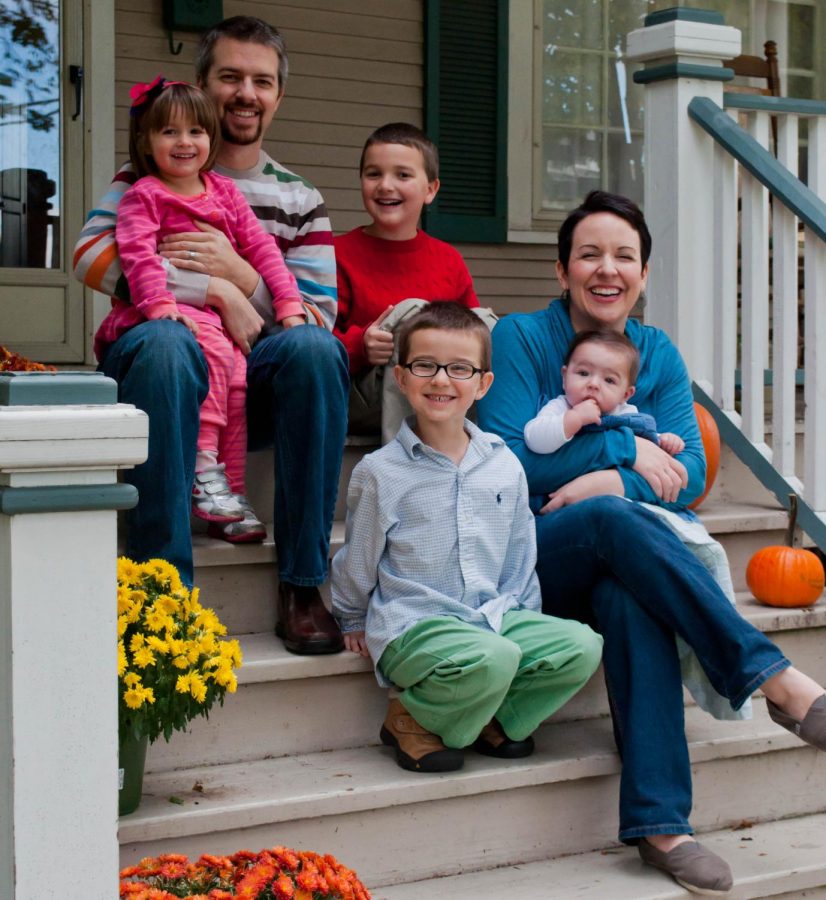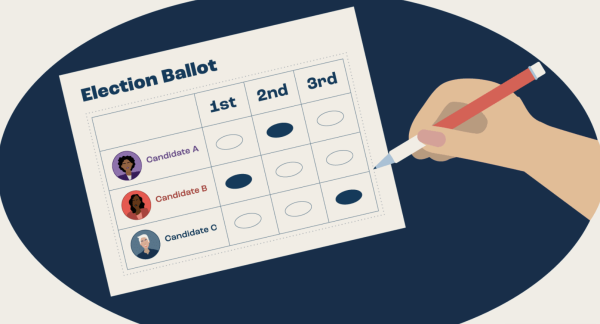My family’s adoption journey
Hassler with his family in 2012. The two youngest kids were then in foster care.
I am the oldest of four kids, and two of my younger siblings are adopted. My family’s firsthand experiences tell a story about adoption different than some may think. Adoption is a positive opportunity to help new families grow that more prospective parents should consider.
I love my adopted siblings, and they have grown so much since we first took them into our house in September 2012. The first time I met them was the day they were moving into our house, which would become their forever home. My sister has gone from a quirky, cheese-obsessed 3-year-old to a loving, compassionate preteen who started middle school this year. My youngest brother has grown from a relatively unresponsive baby (we didn’t hear him cry for days) to a hilarious and outgoing 8-year-old who talks non-stop.
Forty-five percent. That’s how many pregnancies were considered unplanned in 2011, according to an article reviewed by the Centers for Disease Control and Prevention (CDC).
Hundreds of thousands of abortions take place each year in the United States. A 2005 study from the Guttmacher Institute found some common reasons women chose abortions, including “having a baby would dramatically change my life” and “I can’t afford a baby now.”
Guttmacher Institute Data shows the abortion rate in the United States significantly increased after 1973, when Roe V. Wade was decided. The rate was the highest in 1980 and 1981, and has generally gone down since then.
However, abortion is far from gone – the same organization (which supports the legality of abortion) reported 862,000 abortions in 2017 in the United States.
According to Creating A Family, a NC organization which describes itself as “the national adoption & foster care education and support nonprofit”, in 2014, 110,373 adoptions took place in the US, 18,329 of them domestic infant adoptions.
In 2017, about 105,000 kids three years old or younger went into foster care. From 1973 to 2016, the amount of adoptions per year has fluctuated but not changed drastically.
It seems that the significantly lower adoption and foster care rates as compared to abortion indicates that abortion seems more appealing or more like the right decision to those facing unplanned pregnancies.
Our family has had so many experiences and blessings that we would not have had if our two youngest kids had never been a part of it.
Exciting moments, like my brother taking his first steps and our adoption hearing in which the judge gave us Beanie Babies.
Funny moments, like my brother dancing passionately in his highchair in a Mexican restaurant, and my (then 3-year-old) sister eating Panera butter packets like it was her job.
Certain hardships come with being adopted that I do not understand on the level an adopted child might. Despite these hardships, that does not mean an adopted child cannot live a fulfilled life.
Some may point at the fact that our foster care system is overburdened and there are children suffering in it, and say abortion can decrease both of these realities. Indeed, there have been issues with foster care systems being strained. Dr. John de Garmo said in a 2019 interview with Fatherly that “With more kids being placed into the system, there are less homes for these children to stay. That’s why we read stories of children in foster care who are sleeping in offices of case workers or hotel rooms with the case workers because there aren’t enough foster homes for these children.” In a 2013 NPR piece, Alex Morales, then CEO of the Children’s Bureau of Southern California, said they did not have enough homes for foster kids. “The children have no place to go when they come into the care of the government or courts.”
My proposed solution is for more people to step up and foster and adopt, not denying the kids a chance to live altogether. Families like mine blessed to have the resources to do so have an opportunity to foster, adopt, or like my family did, adopt out of foster care.
The Child Welfare Information Gateway, a DC-based government information service says “Foster care (also known as out-of-home care) is a temporary service provided by states for children who cannot live with their families. Children in foster care may live with relatives or with unrelated foster parents. Foster care can also refer to placement settings such as group homes, residential care facilities, emergency shelters, and supervised independent living.” Adoption is when a child legally becomes a member of your family.
The truth is, if many more children are given the gift of life, and put up for adoption, families need to be stepping up and opening their homes to these children. Fellow Christians and pro-lifers, this includes you. It’s a big commitment – you are raising a child – but you are giving both the child and yourself the opportunity to become a family together.
If a mother is facing an unplanned pregnancy and feels unable to care for her child, putting him or her up for adoption is an undeniably unselfish decision. Simply put, as a teenage male, I will never fully understand the pain and complication of carrying a child to term with so many unknowns. Here are two stories of women who had children who were adopted.
Birth mom of former NFL star and activist Colin Kaepernick, Heidi Russo, said, “My adoption story was born out of the greatest love a mother can ever feel for her child. I loved my son more than anything in this world. I loved him more than I loved myself.”
“Choosing life for my daughter and giving her the family she has is the single thing in my life that I am most proud of,” Crystal Rae, another birthmother, said.
Recently, the story of Jessica Long was highlighted in a Super Bowl commercial. Long, despite having amputated legs, is a swimmer who has won 13 Paralympic gold medals. The adoptive mom in the commercial says a line that can help sum up the highs and lows of adoption: “It might not be easy, but it’ll be amazing.”
The start of an unplanned child’s story can be one with fear, doubt, and uncertainty. However, that does not have to be the end.


